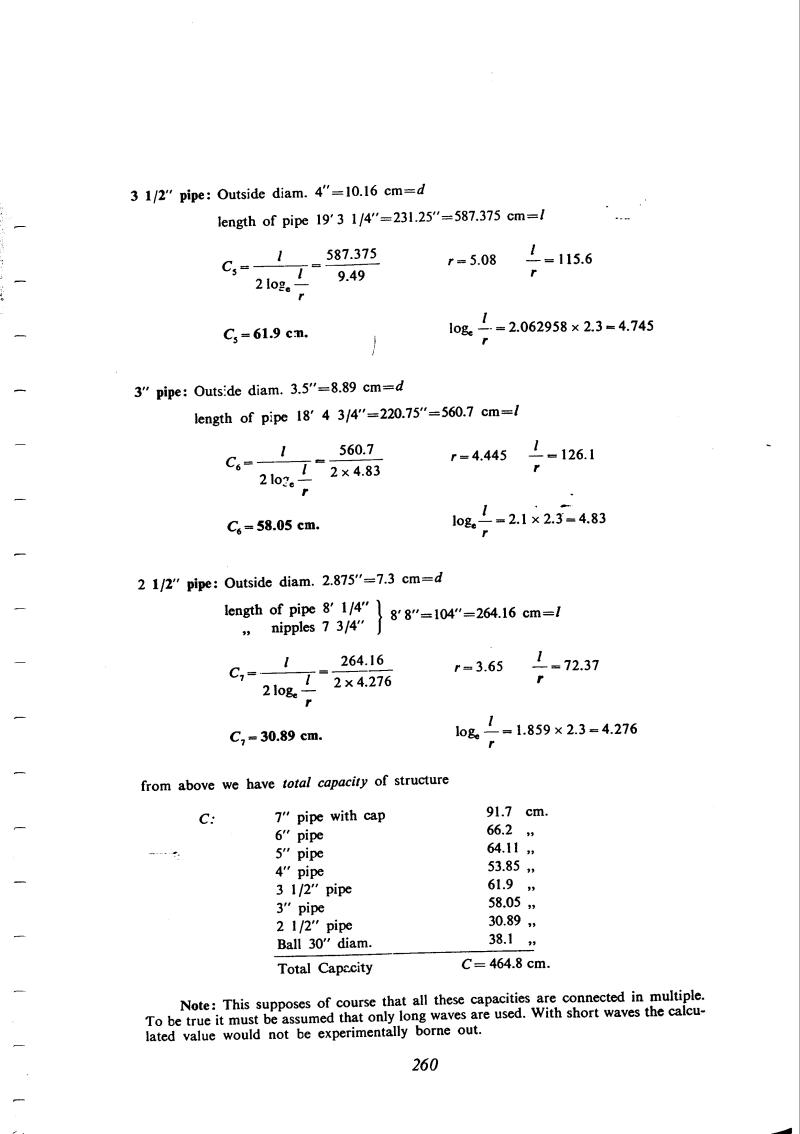
Nikola Tesla Books
3 1/2" pipe: Outside diam. 4"=10.16 cm =d
length of pipe 19' 3 1/4"=231.25"=587.375 cm=l
C5=61.9 cm. logel/r = 2.062958x2.3 = 4.745
3" pipe: Outside diam. 3.5"=8.89 cm=d
length of pipe 18' 4 3/4"=220.75"=560.7 cm=l
C6=58.05 cm. logel/r = 2.1x2.3 = 4.83
2 1/21" pipe: Outside diam. 2.875"=7.3 cm=d
| length of pipe 8' 1/4" | 8' 8"=104"=264.16 cm=l |
| â nipples 7 3/4" |
C7=30.89 cm. logel/r = 1.859x2.3 = 4.276
from above we have total capacity of structure
| C: | 7" pipe with cap | 91.7 cm. |
| 6" pipe | 66.2 â | |
| 5" pipe | 64.11 â | |
| 4" pipe | 53.85 â | |
| 3 1/2" pipe | 61.9 â | |
| 3" pipe | 58.05 â | |
| 2 1/2" pipe | 30.89 â | |
| Ball 30" diam. | 38.1 â | |
| Total Capacity | C=464.8 cm. |
Note: This supposes of course that all these capacities are connected in multiple. To be true it must be assumed that only long waves are used. With short waves the calculated value would not be experimentally borne out.
November 5
Photographs of the Colorado Springs laboratory always show the pole rising from the center of the building. Its dimensions are given in the entry of 17 October. Now Tesla calculates the capacity of the pole as the sum of the capacities of its parts of different thickness, using the formula first cited on October 28th. His final remark indicates that he had thoroughly understood the physical essence of the phenomenon.

